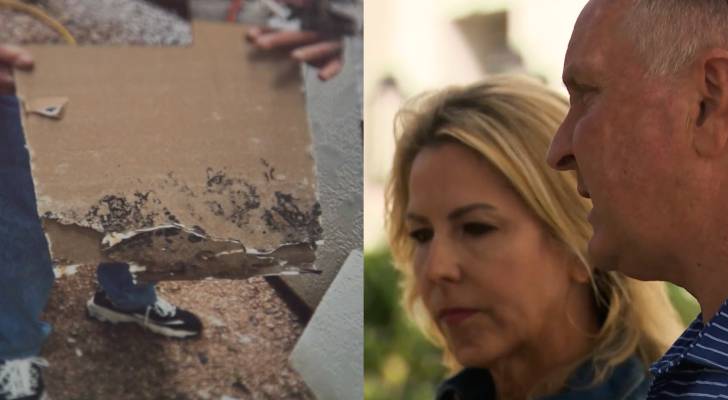
When Angela and Terry Taylor of Houston moved into a four-story home in a gated community in 2020, they thought it would be a safe, low-maintenance environment where they could ease into retirement.
Instead, things started to go wrong almost immediately. The Taylors noticed condensation on the windows and doors. Angela began to feel ill.
They soon identified the problem: mold. A doctor discovered mold in Angela’s sinuses and told her it was the highest level he had seen in 32 years.
Don’t miss
- I’m 49 years old and have nothing saved for retirement — what should I do? Don’t panic. Here are 5 of the easiest ways you can catch up (and fast)
- Gain potential quarterly income through this $1B private real estate fund — even if you’re not a millionaire. Here’s how to get started with as little as $10
- You’re probably already overpaying for this 1 ‘must-have’ expense — and thanks to Trump’s tariffs, your monthly bill could soar even higher. Here’s how 2 minutes can protect your wallet right now
Then they checked out the house. Hundreds of thousands of mold spores per cubic meter, on the walls, beneath stucco finishes — even their furniture.
"It’s not safe for anybody to be there," their attorney Ernest Freeman told KHOU 11.
The Taylors have moved into an apartment, carrying the costs of the apartment and their new home at the same time.
"We’re trying to retire one of these days and these are some of the most expensive days of our lives," said Terry Taylor. "It’s unfathomable that we’re in the position we’re in."
Now they’re suing the home builder, Pelican Builders, and sharing their story to alert other people to the dangers.
Mold takes a physical and financial toll
"We worked hard, raised our kids and this is our time, and I’ve gotten sick," Angela said. "It’s just a nightmare."
The couple said they initially tried to work with the builder on a solution.
Read more: Want an extra $1,300,000 when you retire? Dave Ramsey says this 7-step plan ‘works every single time’ to kill debt, get rich in America — and that ‘anyone’ can do it
Pelican Builders’ lawyer Ben Westcott said that the company offered to repair the Taylors’ home at no cost in 2022. He said the Taylors’ decision not to take the offer led to further degradation of the property.
But Freeman and his clients note that the builders’ offer did address underlying structural issues that caused the mold growth in the first place.
Mold grows when houses aren’t properly sealed. Warm air fills the inside of the walls, forced down from the attic. Cooler air from the other side of the wall makes condensation form, causing mold to grow rapidly.
What you can do if your new home has serious structural issues
If you, like the Taylors, find structural problems in a new-build home, there are several avenues you can pursue to get help.
First, review your contract and the builder’s warranty. This type of warranty is standard for new homes, and is also enforced when any extensive remodels to your existing home take place. It covers permanent parts of your home, including concrete floors, plumbing, electrical work and the like.
You may also have a home warranty, which covers replacements or repairs. This can include appliances or air conditioning systems, and servicing for these items.
If your warranty covers the repairs you need, you should have no trouble enforcing the terms of your agreement with your builder.
If the issues are not part of the warranty, but are so significant that the property is uninhabitable, your builder should also make a good faith agreement to repair the damage and underlying issues with the home.
If your builder refuses to cooperate, you can file a complaint with your state’s contractors licensing board. The specific rules and regulations vary by state, but each board can pursue disciplinary action against a contractor who fails to uphold a reasonable standard for their work.
Finally, you can consider hiring a lawyer. Look for a representative who has handled similar cases in the past, and can help you understand the laws in place in your state to protect homeowners.
What to read next
- Millions of Americans now sit on a stunning $35 trillion in home equity — here’s 1 new way to invest in responsible US homeowners while targeting a 14%-17% IRR
- Robert Kiyosaki warns of a ‘Greater Depression’ coming to the US — with millions of Americans going poor. But he says these 2 ‘easy-money’ assets will bring in ‘great wealth’. How to get in now
- Here are 5 ‘must have’ items that Americans (almost) always overpay for — and very quickly regret. How many are hurting you?
This article provides information only and should not be construed as advice. It is provided without warranty of any kind.